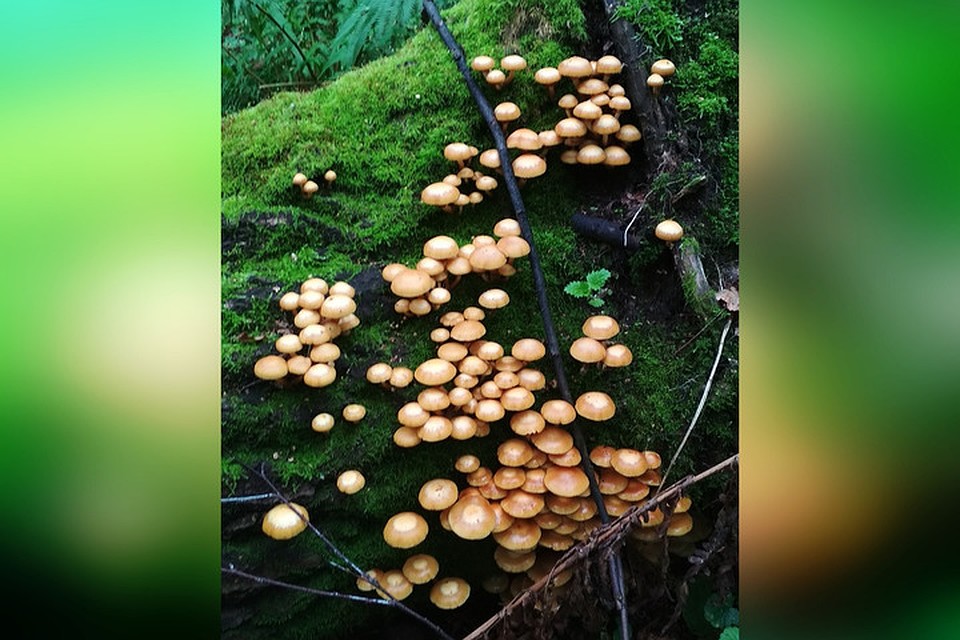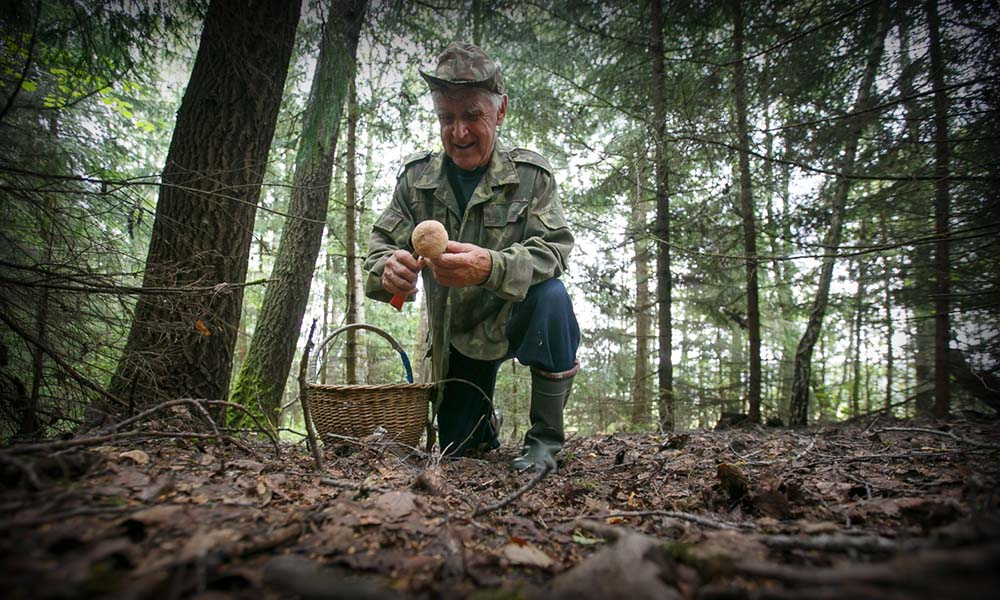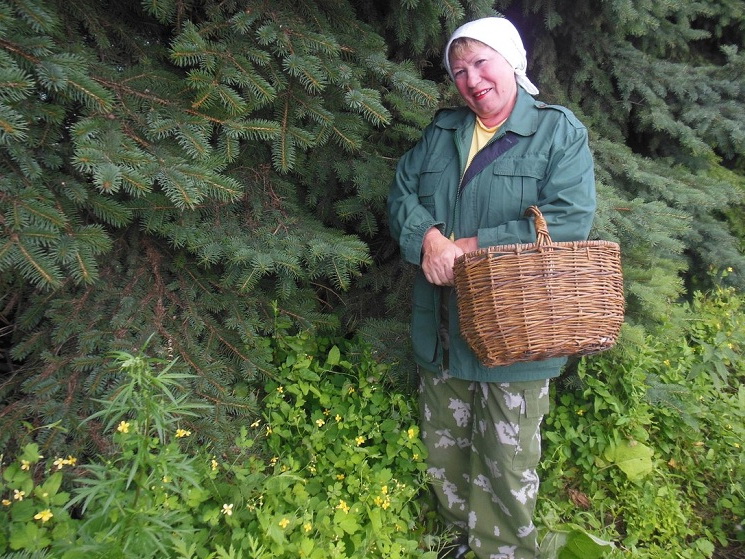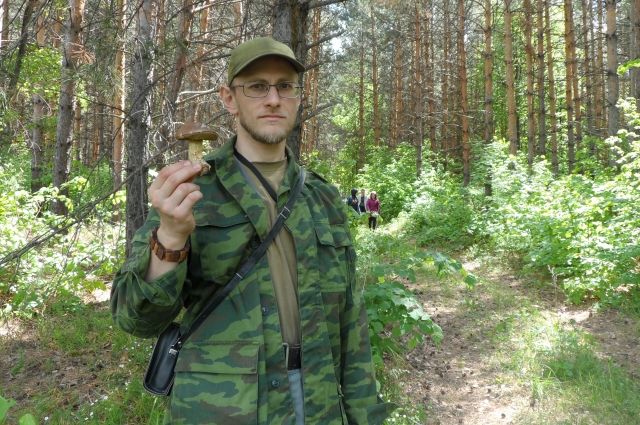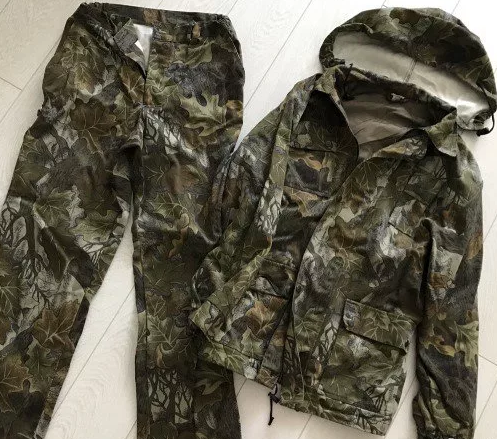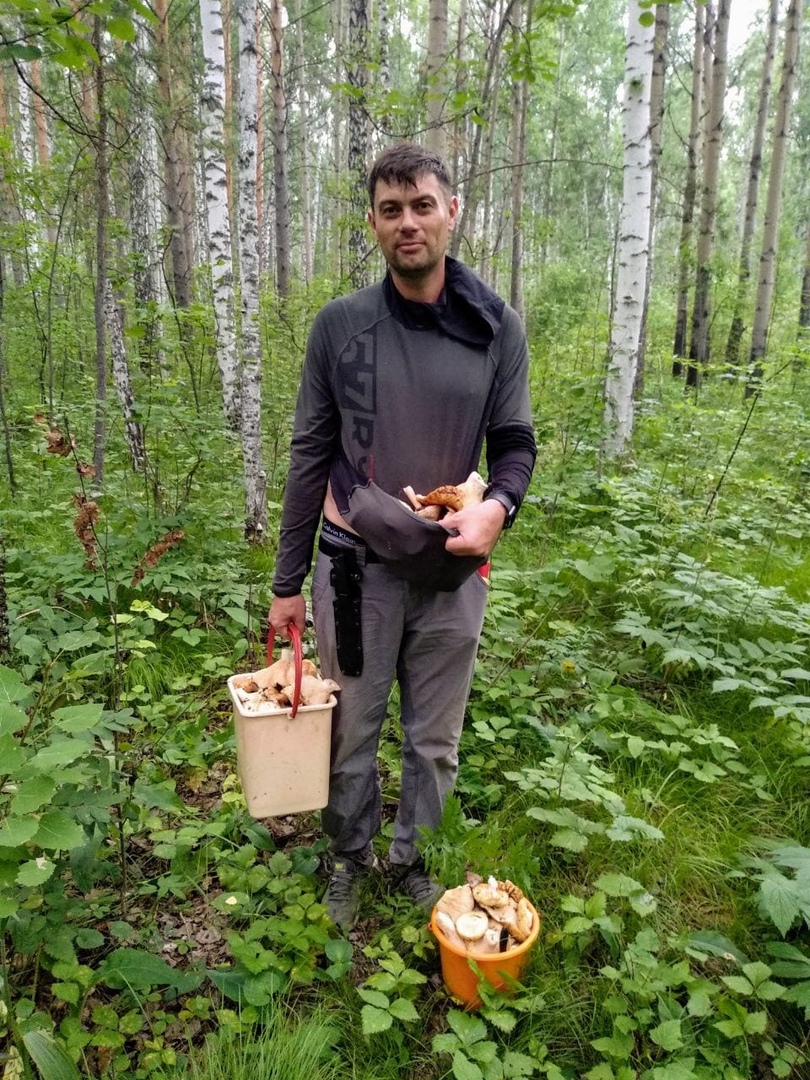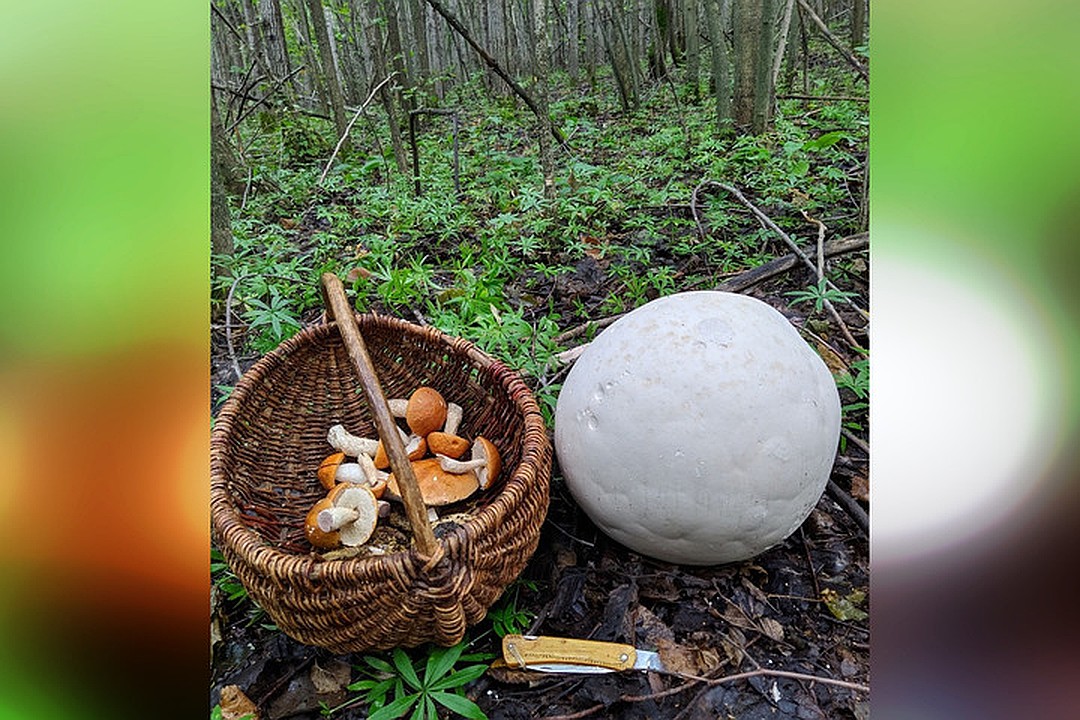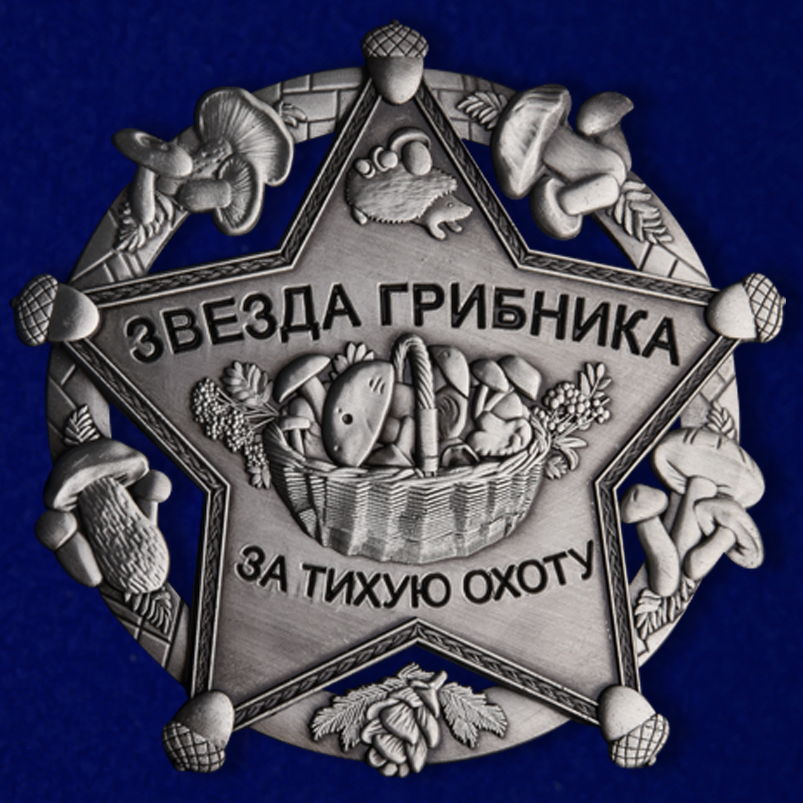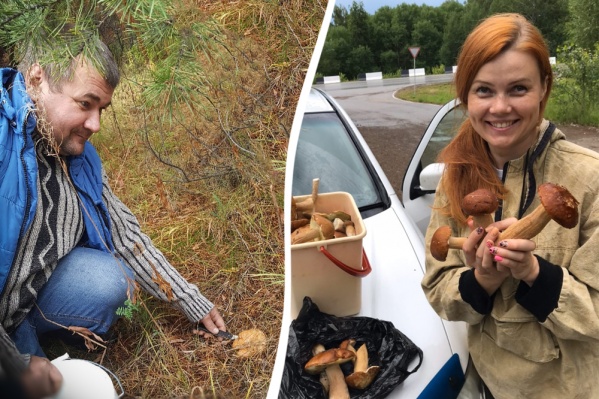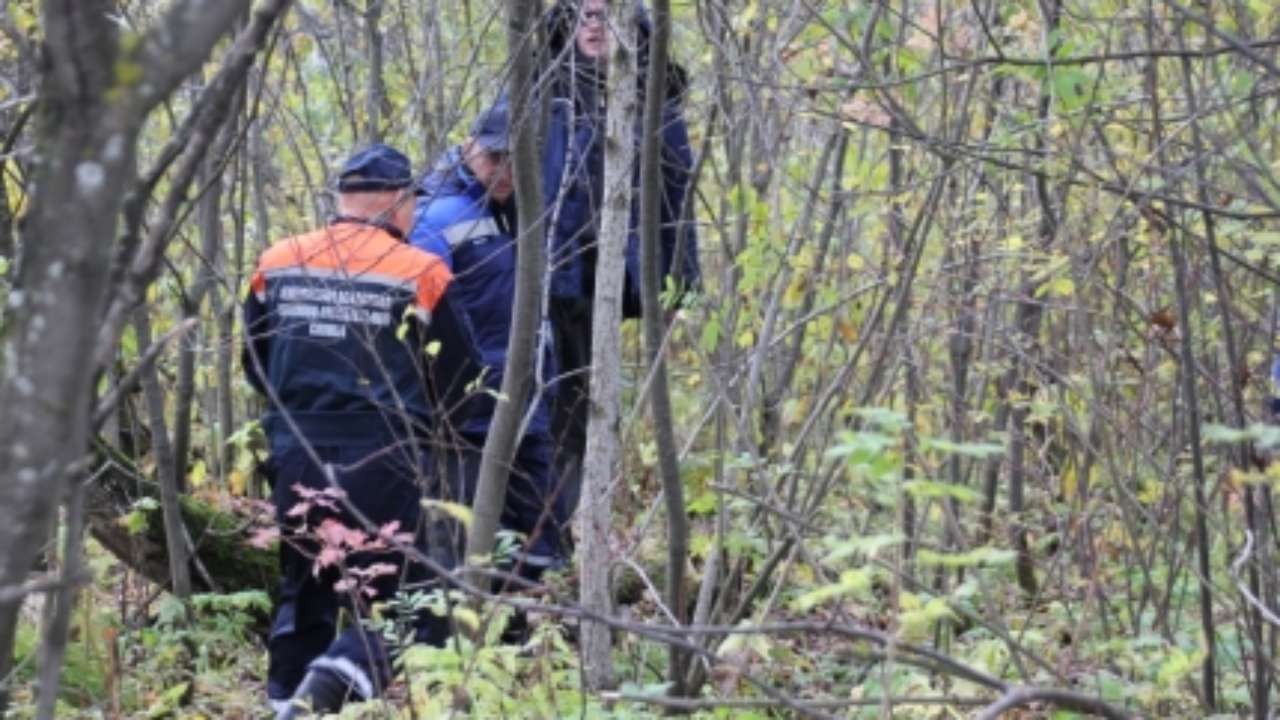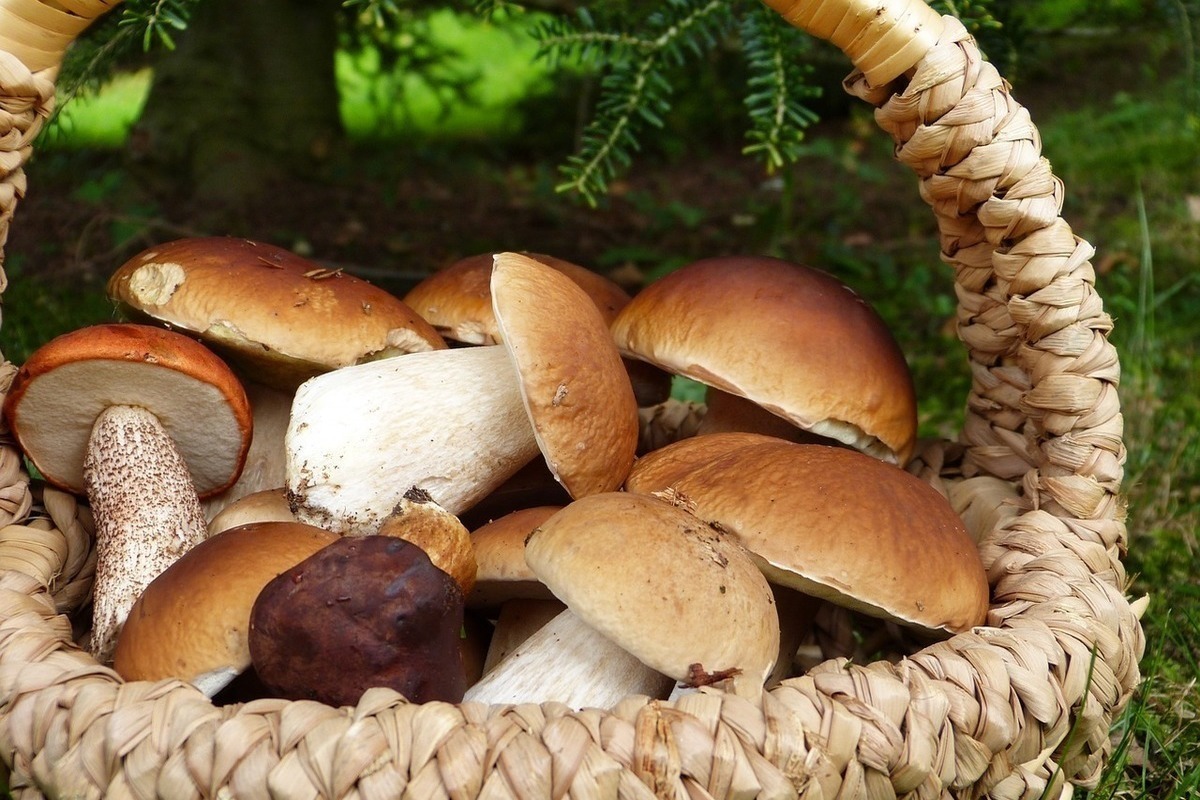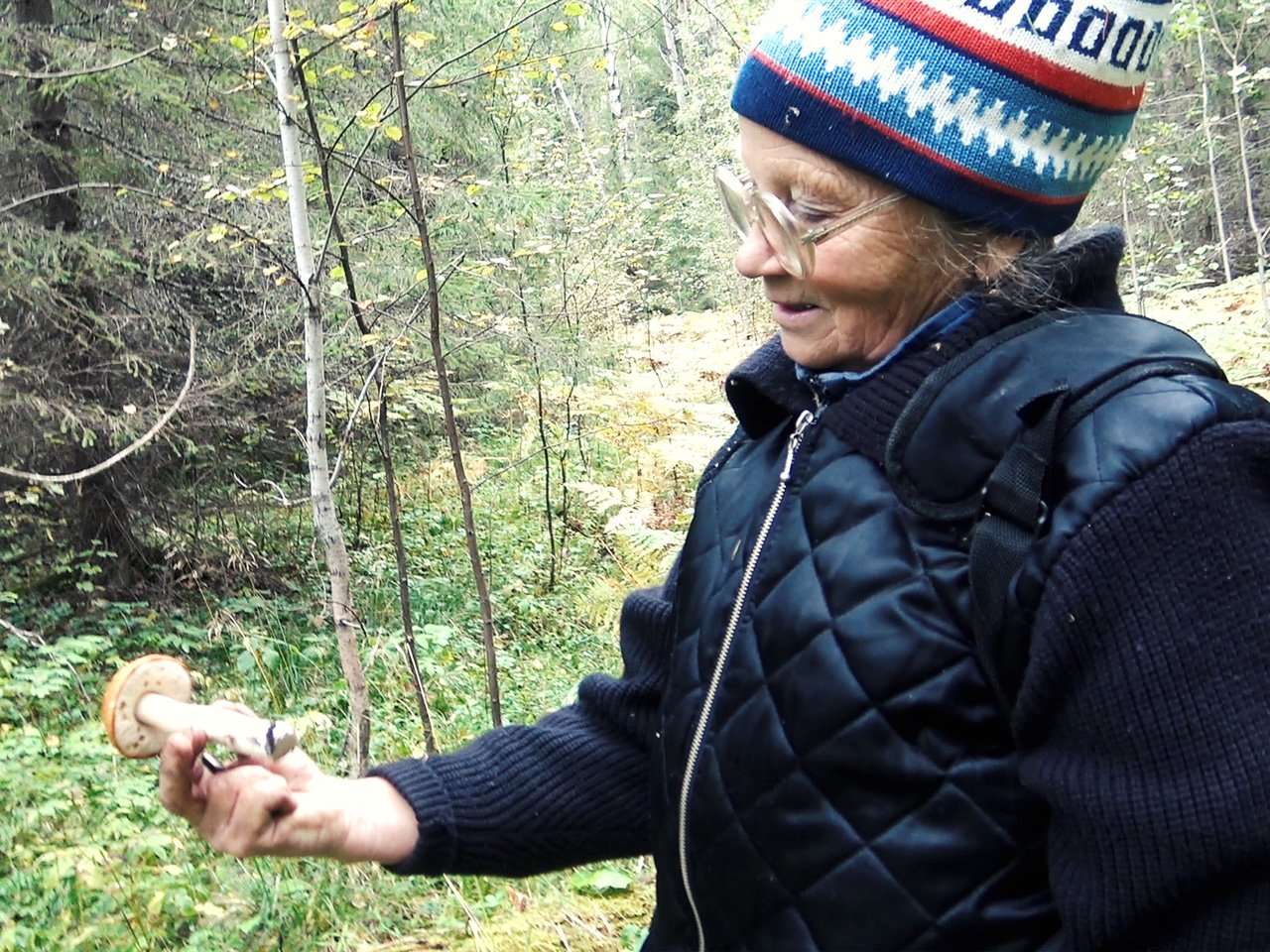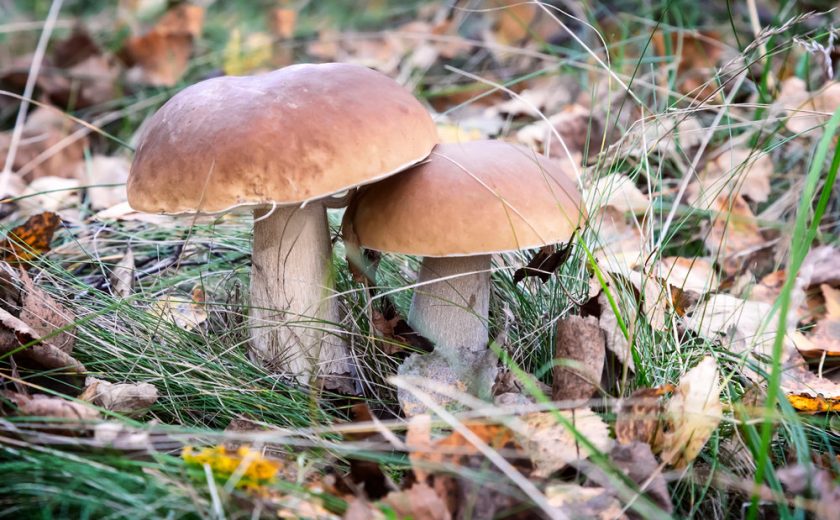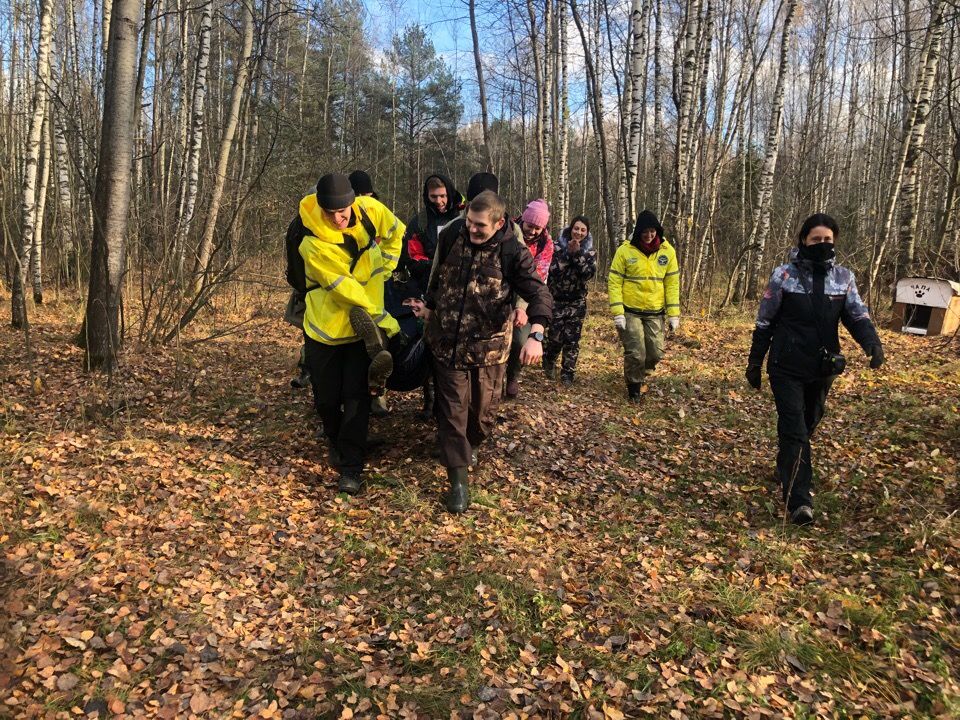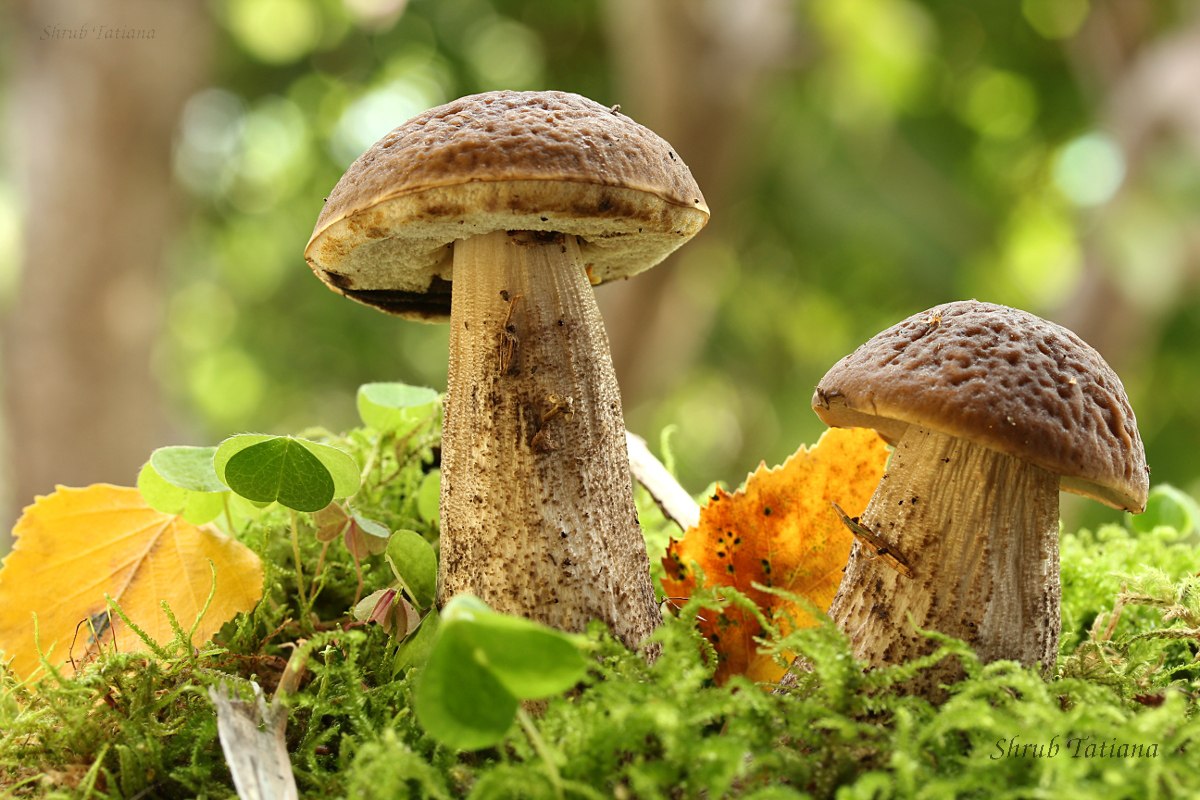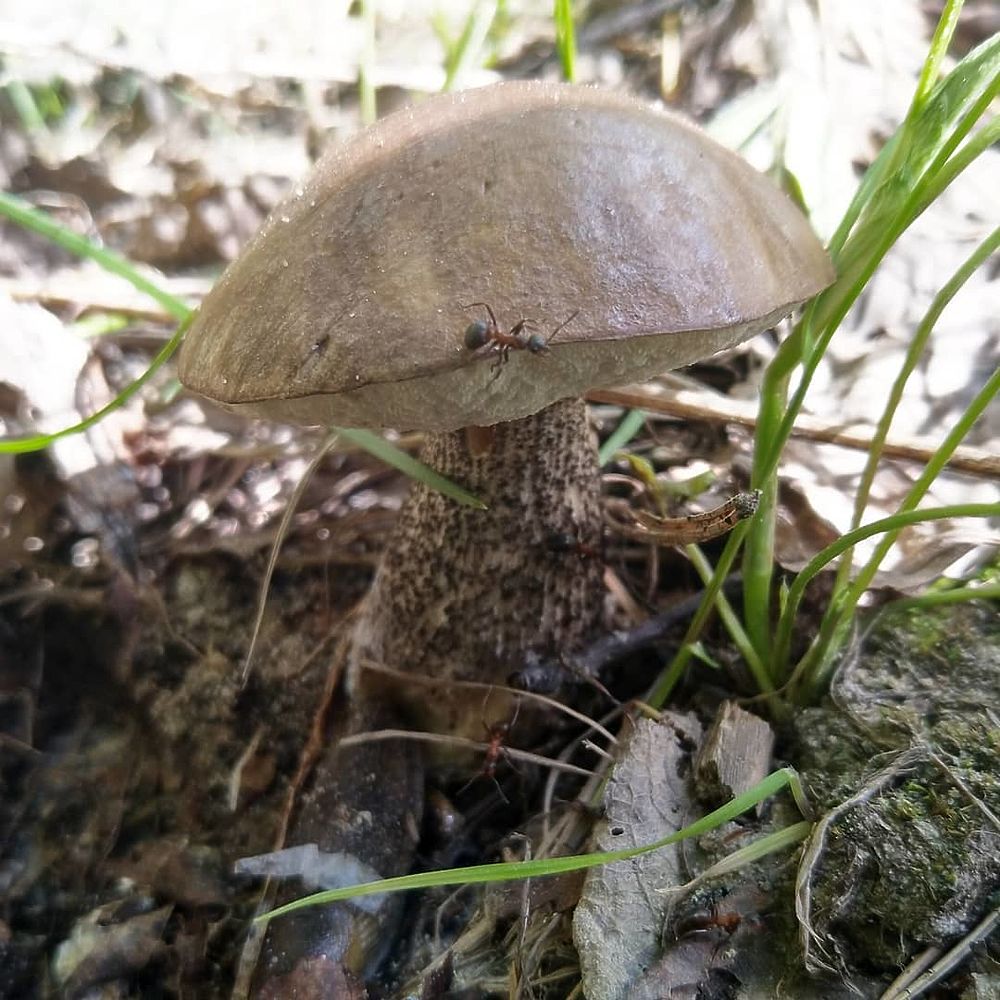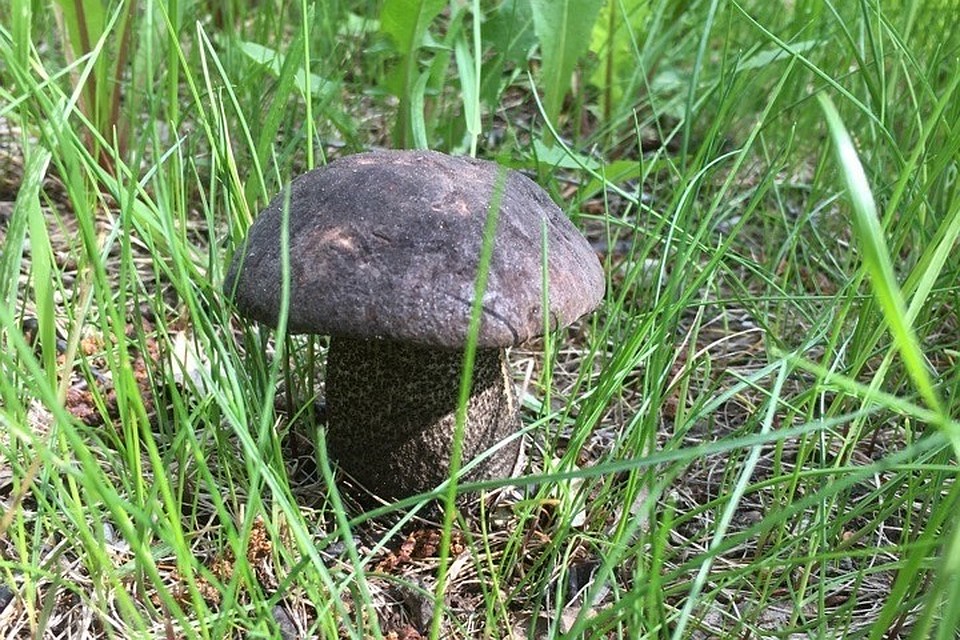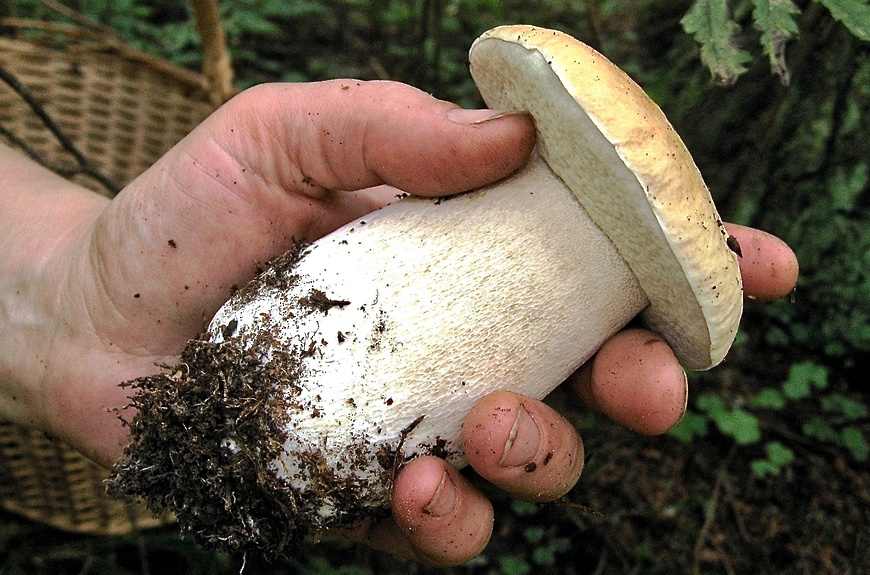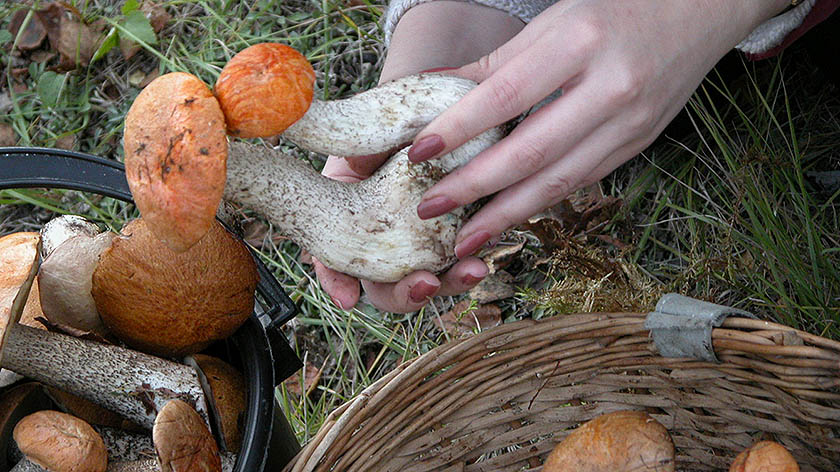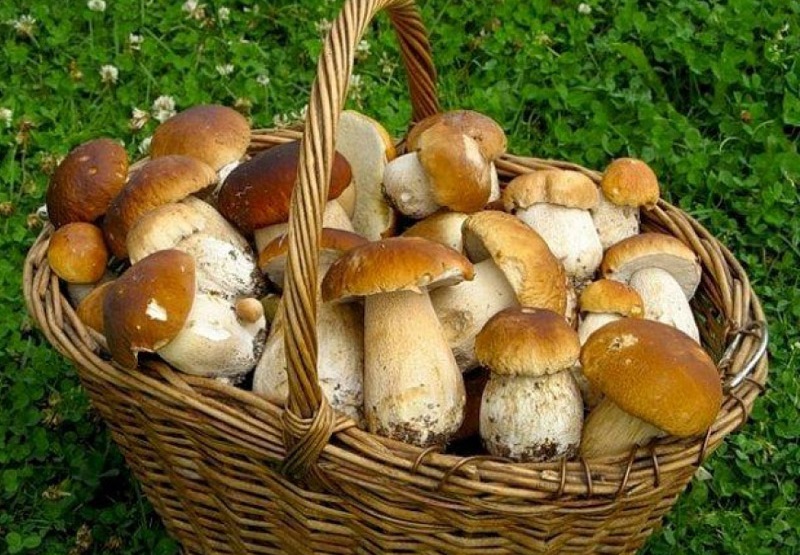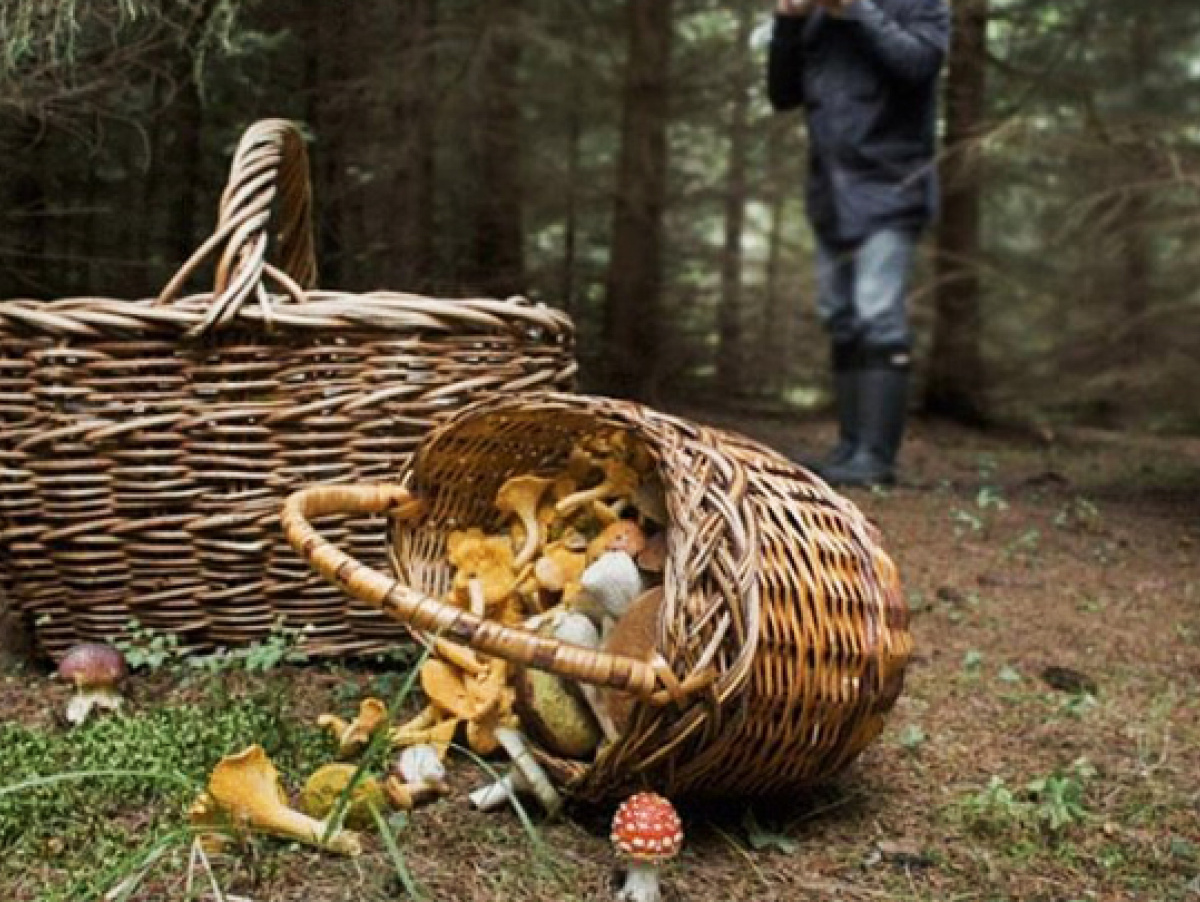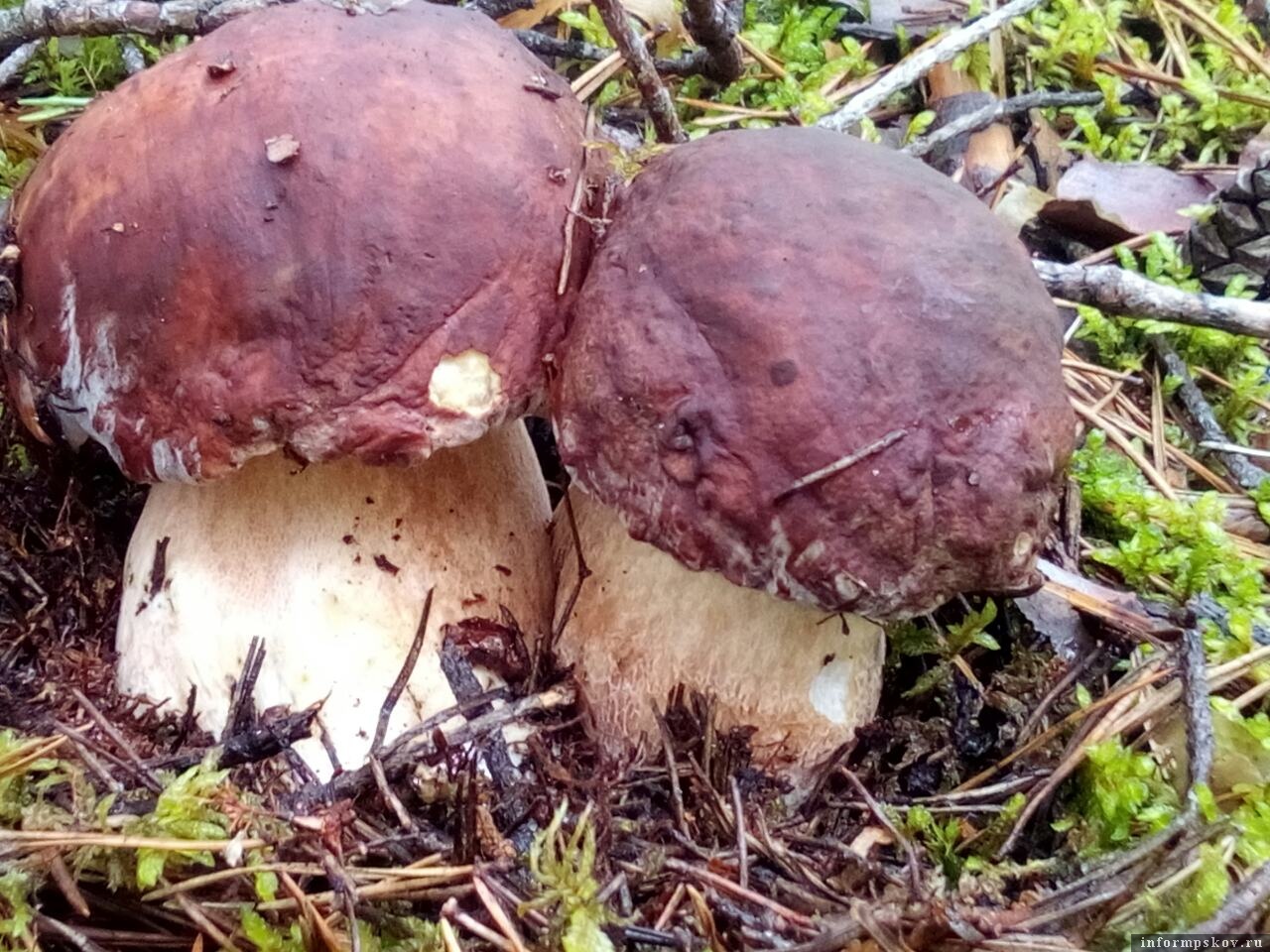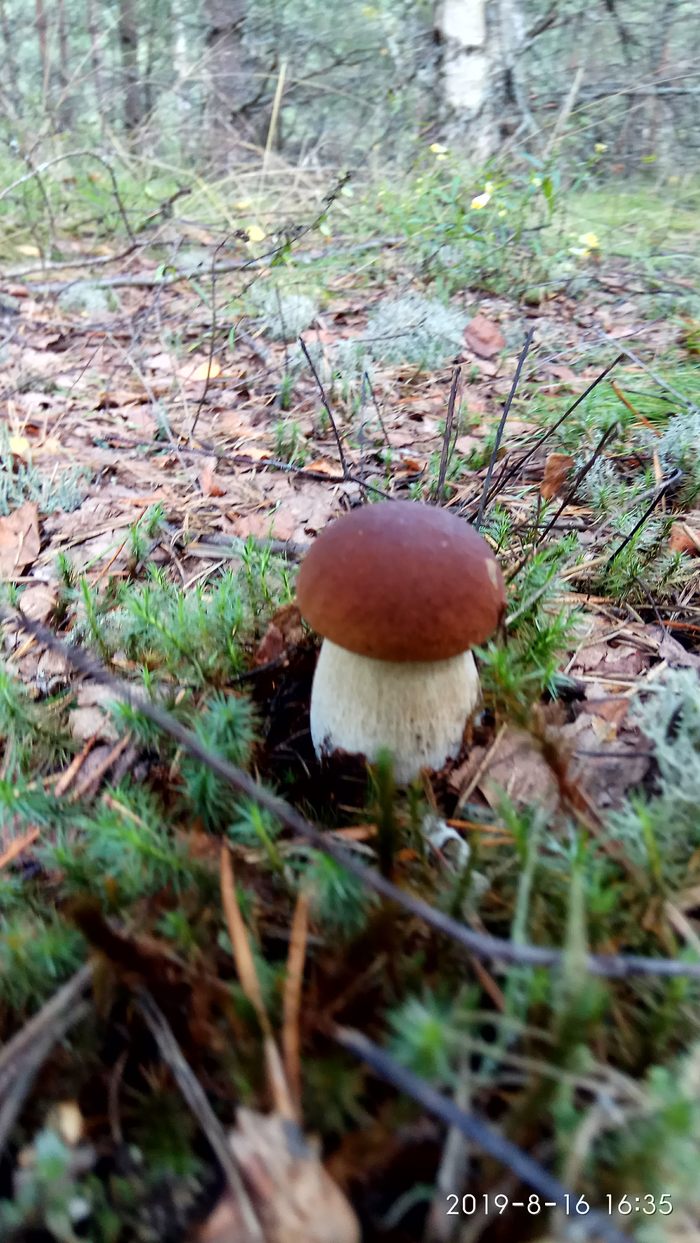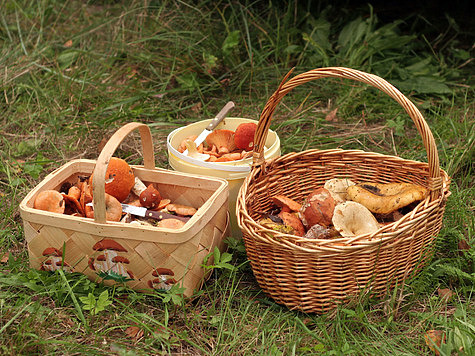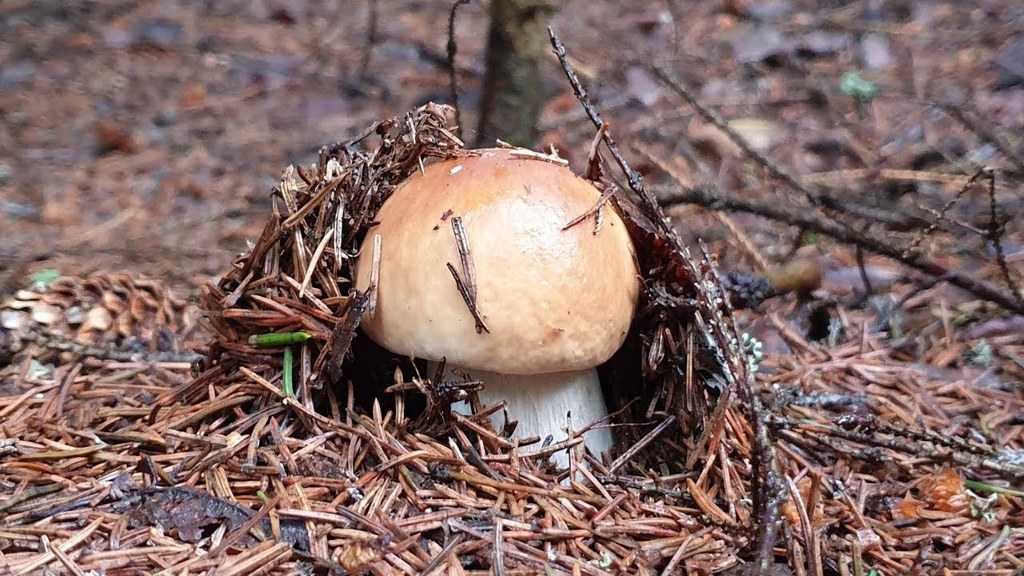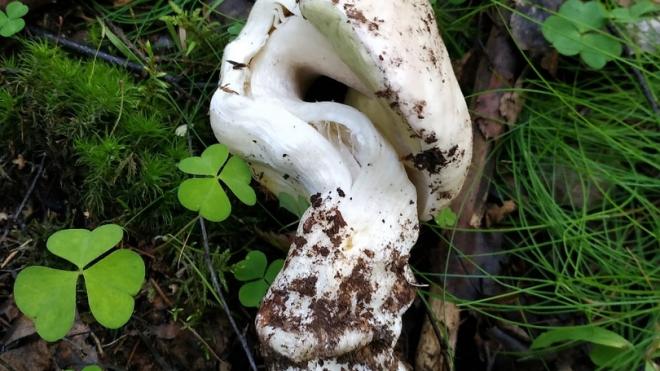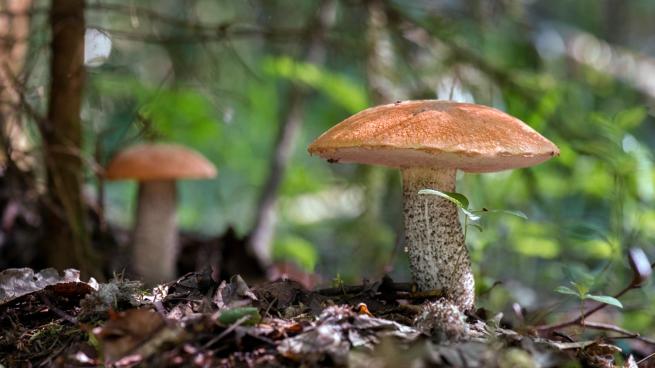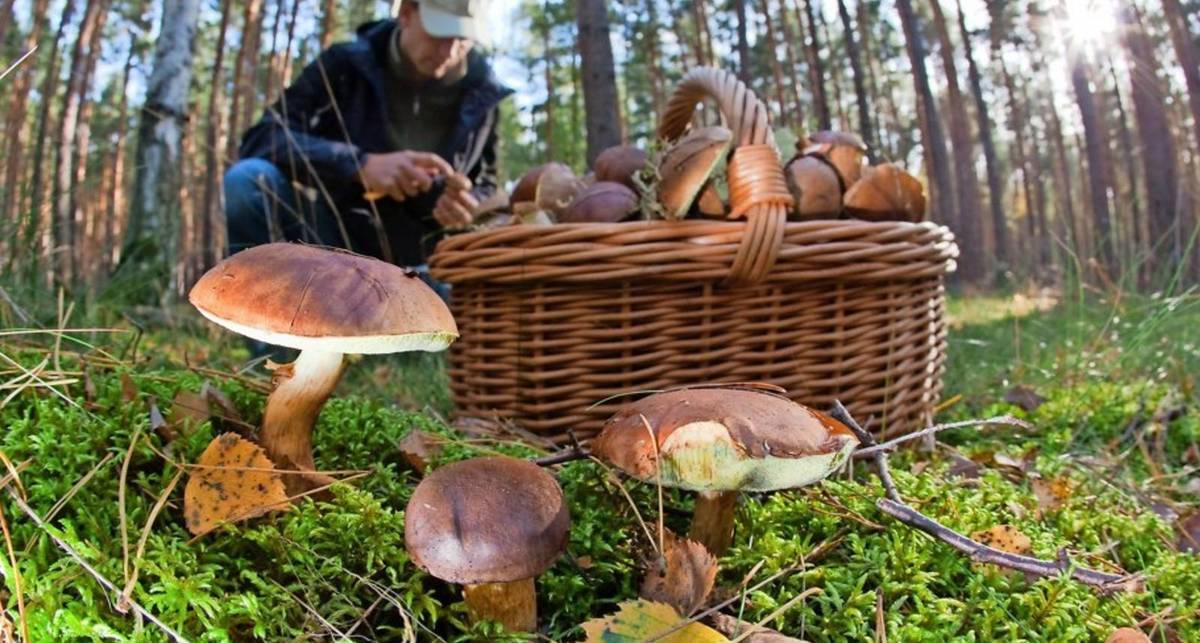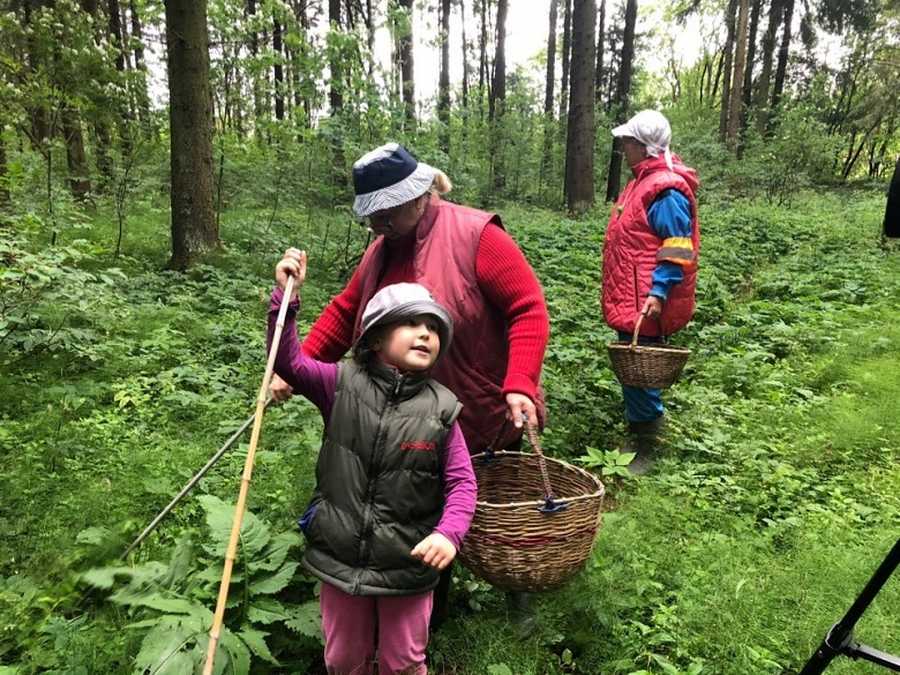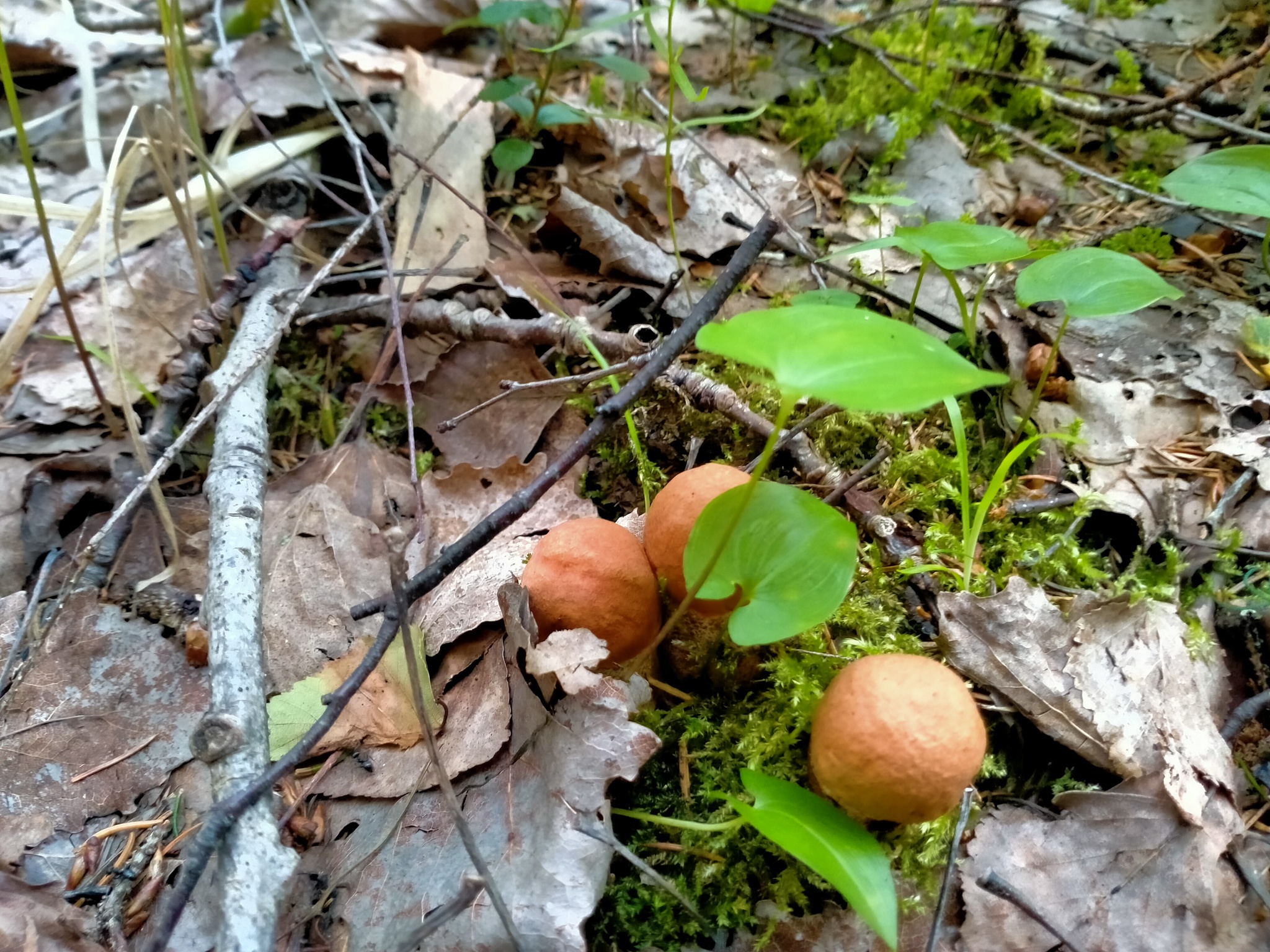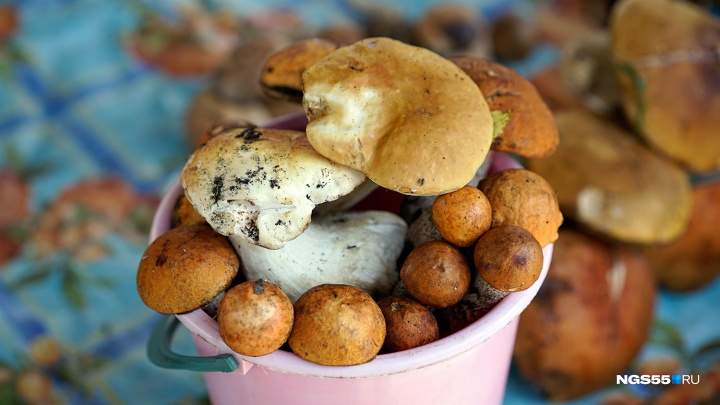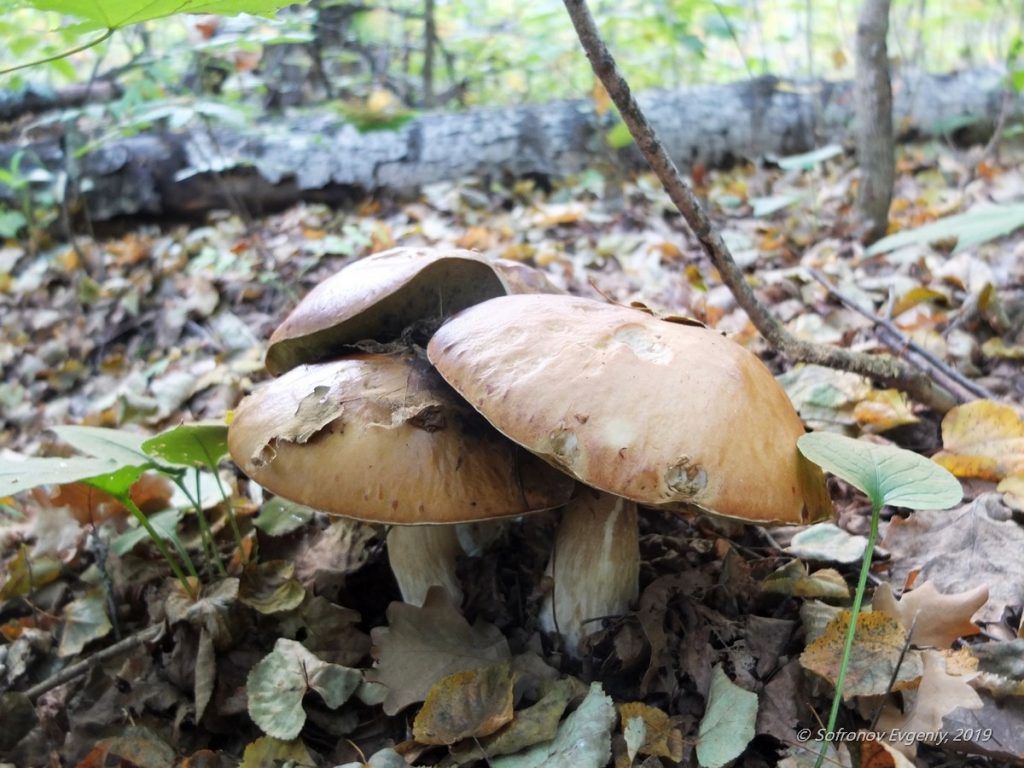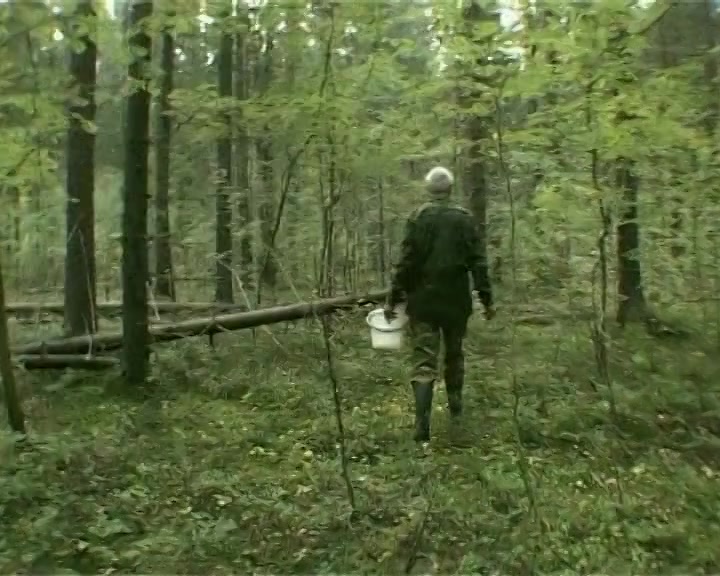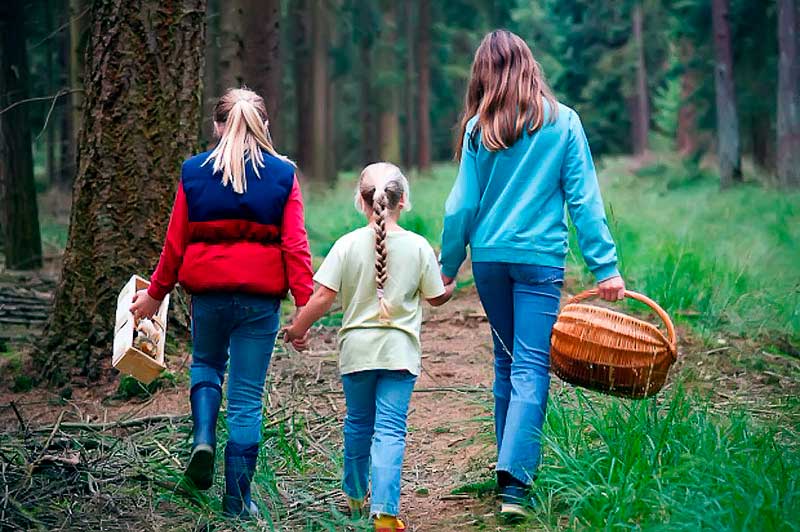About mushrooms
Mushrooms have a peculiar structure. The body of the fungus is mycelium, consisting of a large number of mushroom filaments. They do not have chlorophyll and cannot, like plants, absorb carbon dioxide from the air and feed on organic compounds
Some mushrooms, such as tinder fungus, feed on the sap of trees and lead to their decay. There are a lot of such parasitic fungi, they parasitize on grasses, breads, garden plants and cause various diseases in them.
And such mushrooms as champignons, raincoats, morels, etc. live on plant debris and feed on them. They are called saprophytes.
And white, boletus, boletus, camelina, etc. came to symbiosis (mutually beneficial cohabitation) with higher plants. In these fungi, the hyphae from the roots of the tree take the organic compounds they need, but unlike parasitic fungi, they themselves provide the tree with water and nitrogenous compounds, which they take from the soil with the help of a branched mycelium.
These mushrooms even favor certain types of trees. So the boletus and boletus love birch forests, and pine and spruce mushrooms.
Mushrooms multiply with the help of spores. Under favorable conditions, spores germinate in thin mushroom filaments and they intertwine to form a mycelium. At favorable temperature and humidity, the mycelium branches out and develops due to a good nutrient medium from the forest litter. It lies at a shallow depth as it needs an influx of fresh air. Therefore, picking mushrooms does not need to disturb the forest floor.
The mycelium grows in all directions radially and increases per year to 10 -30 cm. After full development, the fruiting stage comes. Mycelium nodules grow and rise above the soil in the form of a mushroom body. The upper part turns into a hat, and the lower part turns into a leg.
Hats can be round, flat, convex, funnel-shaped, etc. And the leg is solid or hollow inside.
Mushrooms grow very quickly. In most mushrooms, they grow to medium size in 3-6 days, and they grow in 8-12 days. During the day, the mushroom can grow from 3mm to 3 cm, it depends on their individual characteristics. After the rain falls, the growth of the fungi increases. There were no differences in growth at night or during the day.
Mushrooms grow in so-called layers. Morels and lines begin to grow in late April and early May and grow for 5-6 weeks.
In June, boletus, white, boletus and boletus begin to appear. They are called spikelets as this is the time of earing of winter rye. In some years there are a lot of them and the layer passes quickly. They are looking for them where there is a lot of light: in forest glades, clearings, forest roads and in young growth.
In July, the next layer of mushrooms appears within 2-3 weeks. And a lot of them grow. This layer also grows mainly in open areas, but it can also be in the forest.
The next layer is the main one and lasts from mid-August until frost.
Mushrooms need moisture, which is why they love forests and groves with moist soil rich in organic matter.
Warmth is an important factor for the development of fungi. The growth of fungi is delayed when the temperature drops or rises. In a rainy warm summer, there are much more mushrooms than in dry and cold ones. And if after hot summer days heavy rains pass, then expect bountiful harvests of mushrooms.
How to pick mushrooms?

The mushroom season starts at the end of April, when morels, stitches and raincoats appear in the forest. In June, meadow mushrooms and "wild" champignons appear, in July russula, chanterelles, boletus, mushrooms, aspen and boletus mushrooms are sprinkled. August, September and October are the most fruitful times: porcini mushrooms, honey mushrooms, milk mushrooms and mushrooms appear.
The best time to pick mushrooms is the first dry morning after a few warm rainy days.It is better to go for mushrooms early - the competition in the forest is huge, and when you arrive closer to lunch, you risk finding only traces of cut mushrooms.
To collect a lot of trophies, do not be lazy to look under all the leaves and bushes - many mushrooms, especially chanterelles, mushrooms, boletus and boletus, love to hide under fallen leaves. In order not to bend over whenever you think of a mushroom, pick up a long strong stick in the forest - and use it to rake foliage and grass.
Everyone knows that you cannot pick mushrooms - this way you will damage the fragile mycelium. Cut gently, without jerking, just above the ground. Feel the cap first - a healthy mushroom should be firm and firm. A dented and flabby mushroom is either too old or wormy.
Mushroom poisoning is very dangerous, so if you are not one hundred percent sure that this mushroom is edible, it is better not to cut it. Never trample even obviously poisonous mushrooms - they can serve as a medicine for forest dwellers.
You need to put trophies in the basket very carefully so as not to crumble. Pre-clean the mushroom from dirt, foliage and needles. On the way home, watch out for the basket, protect it from sudden jolts.
Arriving home, immediately sort and peel the mushrooms. If some mushrooms turned out to be wormy, do not rush to throw them away. It is believed that the mushroom can be saved if it is eaten by the worms less than half. The pests living in mushrooms are nasty, but absolutely safe, they cannot be poisoned and it is quite easy to remove them. To do this, cut the mushrooms into large pieces and place them in cool salted water - a glass of 5 liters of salt. Most mushrooms will take 2-3 hours for the worms to get out. It is better to hold porcini mushrooms in brine for 4 hours, and milk mushrooms - at least a day.
After that, rinse the mushrooms thoroughly to wash off the worms that have crawled out. After that, the mushrooms can be cooked as usual. Keep in mind - raw mushrooms can be stored in the refrigerator for no more than three days, after which it is already dangerous to eat them.
Missing vacation
That's why every year in late May - early June I take two weeks off. The calculation is correct: when you wander day-and-day through the forest, the porcini mushrooms cannot get away from you. If only the rains passed and there was no total drought. Since everything was in order with humidity this time, I reasonably looked forward to success. But a leap year is unpredictable in everything. The mushrooms seemed to be quarantined too.
Not that there were none at all. There were oyster mushrooms, a little oil, there were gray-yellow tinder fungi, which should have been expected in April, but it was dull with porcini mushrooms. Not a single one in two weeks. Despite the fact that the weather was wonderful. Warmly. It is damp. The forest smelled of a sharp mushroom spirit. But these capricious boletus stubbornly did not want to crawl out of the ground. Back in Krasnodar, I looked at the sites of the Kuban mushroom pickers. Everywhere there was a moan to the sky. “They searched for the whole day. There are no mushrooms. The forest is dry. " "Where did the mushrooms disappear this year?" - and so in almost every publication.
Two happiness in the rain
With a mixed feeling of hope, trepidation and fear of missed opportunities, I arrived in my beloved Guamka for the Day of Russia. Cases were detained in the city until lunchtime, and when he arrived, it was already fifteen o'clock. From the sky, densely covered with heavy clouds, constant rain spattered, thunder grumbled behind the nearby ridge, and most importantly, it got dark as if it was deep evening. But can these little things stop the mad mushroom picker? Boots on your feet, raincoat on top and forward!
The reward was waiting at the very entrance to the forest: there is the first white! True, the visibility under the canopy of trees was such that it was always tempting to turn on the flashlight. He found mushrooms only with his nose against them. But when the sun broke through the clouds, the trophies went non-stop: young pot-bellied boletus and plain hornbeams, gray-pink fly agarics, which many are afraid of, but in fact they are very tasty, strong podduboviki and flirty chanterelles. There was even a snow mushroom that looked like a small snowdrift stuck to the trunk of a fallen tree.
But the main surprise awaited the soaked through and through "quiet hunters" at the exit from the forest: two quite decent-sized bushes of ram mushrooms. This rare species from the Red Data Book is otherwise called "mushroom happiness". And here there are two of them. It seems that the forest king finally took pity on those whom he tormented for almost a month, and poured them gifts in full. Well, the season can be considered open.
We collect mushrooms
Mushroom luck smiles on those who come to the forest early, at dawn. Picking mushrooms at this time is a pleasure. The sun's rays still do not interfere with seeing them, and competitors have not yet surrounded you from all sides.
Mushrooms need to be picked slowly. Silent hunting is not running to cover as much of the forest as possible. Hurry here always turns into an empty basket. When picking mushrooms, it would seem not a tricky activity, you need to think, analyze, observe.
Imagine finding the first mushrooms. Let it be aspen trees. Look around and notice in which forest you found them - birch or aspen, young or old, wet or dry, and look for them further in the same areas of the forest.
If you entered one birch forest and did not find anything there, then the second one is empty. It is not worth examining the same third. Most likely, there will be nothing there either. It is better to try to search in forest areas of a different age or other species composition. As a rule, in the first half of summer, mushrooms are more often found in a young forest, and in the second - in a middle-aged and old one.
Please note that in the forests densely overgrown with raspberries and other representatives of the second tier, there are very few mushrooms, or even none at all. This also applies to areas of the forest densely overgrown with grass.
Many mushrooms bear fruit in groups. If you find, for example, butter, green tea or even a porcini mushroom, carefully examine everything around and your basket will be replenished with a few more mushrooms.
Mushrooms are fastidious people. Among the same areas of the forest, some are often chosen and others are neglected. But if they really settle where, then they bear fruit in this place for a long time. Such mushroom places should be remembered - this is your gold fund.
In the literature, there are two ways to collect mushrooms - cut them with a knife or gently pull them out by the roots. Both methods have their drawbacks. At the first, a part of the leg remains, which, rotting, can infect the mycelium. With the second, the mycelium also suffers, as its hyphae are torn. I am not a mycologist, but I believe that the only correct way is to cut the mushroom. Firstly, if the mushroom had not been cut, it would have rotted away from old age. The mushroom holder is probably ready for such a turn of events and will easily cope with it. Secondly, by pulling out the mushroom by the root, you not only definitely damage the mycelium, but also the small rudiments of future mushrooms. By doing so, you are depriving yourself and others of the opportunity to find them when they grow up.
And lastly. There is no need to knock down any mushrooms. Since they grow, it means that Nature needs it.
A bit of history
Mushrooms have been known to people since time immemorial and they have firmly entered their diet. From their own experience, sometimes even sadly, edible and poisonous mushrooms have been identified.
In Russia, they have always been engaged in the collection and preparation of mushrooms. Silent mushroom hunting attracted both children and old people and delighted in communication with nature.
These are the mushrooms that children find.
MUSHROOMS WERE ALWAYS IN RUSSIAN CUISINE, 40 SPECIES OF MUSHROOMS were considered edible.
Poisonous mushrooms that can be fatal include: pale grebe, fly agaric, Patuillard fiber, tiger, white and gray-yellow ryadovka, sulfur-yellow and brick-red mushrooms, etc.
They do not have a specific smell, except for the smelly fly agaric, they have the usual mushroom aroma. And you need to know them and never take unfamiliar mushrooms.
Edible mushrooms are divided into 4 categories.
The first category is a porcini mushroom, a real milk mushroom and a mushroom, mushrooms with a very high taste.
The second category: yellow milk mushrooms, white podgruzdki, common mushrooms, aspen mushrooms, boletus.
The third category: chanterelles, mushrooms, boletus mushrooms, Polish mushrooms, autumn mushrooms, field mushrooms, plump women, value, russula, volnushki, aspen milk mushrooms, morels, stitches.
Fourth categories: goat, green tea, black podgruzdok, ryadovki, bitter, pepper and black milk mushrooms, gray-haired mushrooms, violin. At the same time, mushroom pickers believe that such a division of mushrooms into categories is very arbitrary. For some reason, mushrooms were attributed to the third category? Although in terms of chemical composition they contain 2.2% proteins, and in butter, although they belong to the second category, only 0.9%, in mushrooms of minerals 1%, and in boletus 0.5%.
Mushrooms are mysterious organisms. Scientists are still debating the place of fungi in the organic world.
Since fungi are close to animals in nitrogen metabolism, the presence of chitin and glycogen. At the same time, since they feed by absorption, they are plants.
Autumn mushrooms are the safest and healthiest. The mushroom box "gives out" everything harmful with the first harvest, and late autumn mushrooms can be safely harvested. They are safe. Naturally not along highways, landfills, landfills, etc. It is dangerous to eat collected there.
White, boletus, boletus mushrooms, chanterelles are a very tasty and nutritious product. They contain a lot of plant proteins, carbohydrates and minerals.
Most importantly, don't forget the basket and knife!
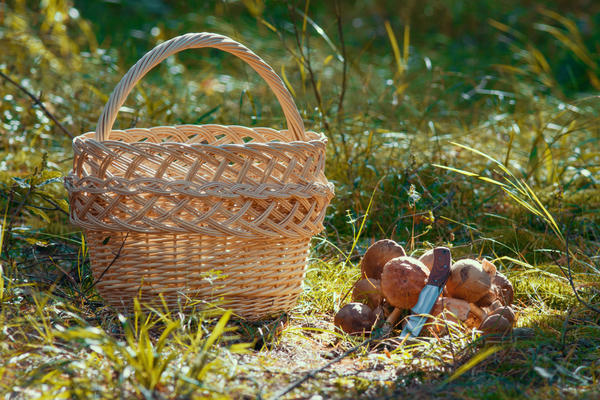 A basket for mushrooms is both practical and healthier
A basket for mushrooms is both practical and healthier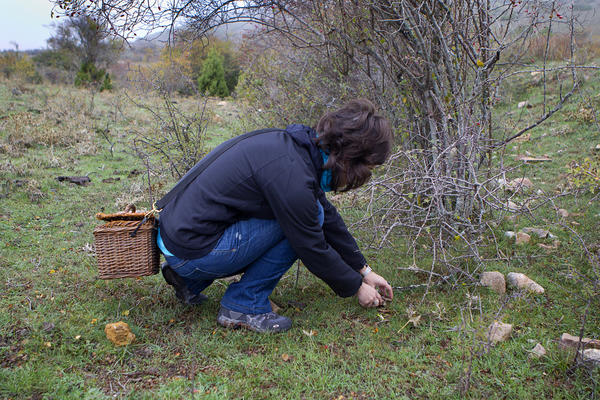 A comfortable wicker knapsack is a great option
A comfortable wicker knapsack is a great option
- It is necessary in order to cut mushrooms evenly and accurately.
- If you prefer to loosen and twist the legs of boletus or white boletuses, it is more convenient to check them for worminess using slices.
- The earth from the legs and debris from the hats must be cleaned off.
special mushroom knife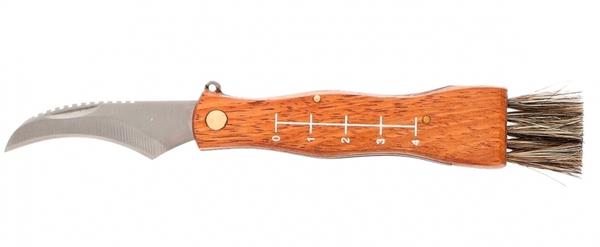 Small mushroom picker knife with wooden handle, PALISAD
Small mushroom picker knife with wooden handle, PALISAD
- The crescent blade is very convenient for cutting off the round stem of the mushroom, and the jagged edge will not only facilitate the cut of the fibrous stem of the mushroom, but will also help to clean it of the remains of the earth qualitatively.
- A stiff brush at the end of the handle does an excellent job of cleaning the mushroom head from adhering debris.
- The knife blade is very sharp. After all, the main "motto" in his work is to cut, not saw.
- The lacquered wooden handle fits nicely in the hand.
- Well, for those who like to measure especially outstanding "trophies" there is a scale on the handle of the knife.
- In order not to lose this valuable tool in the forest, hang it on your belt using a carabiner threaded into a special clip on the base of the handle.
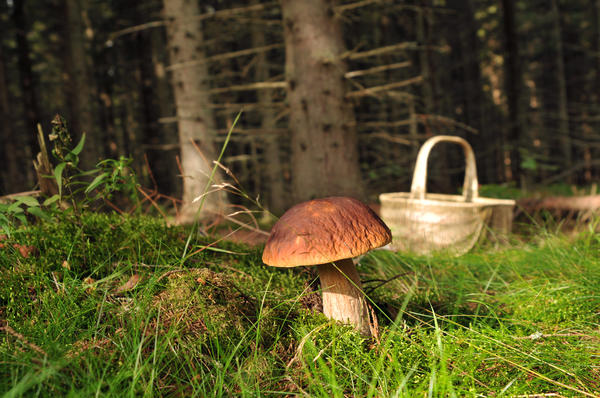 Silent hunting season is a great time
Silent hunting season is a great time
High season of the Kuban mushroom picker
Sometimes there are so many porcini mushrooms that the main difficulty is not to find them (what to look for if they flaunt on every hillock), but to pull two heavy baskets out of the forest. And what huge boletuses they swing! Each mushroom is half a bucket, no less. Only these spring-summer whites are very unstable. Unlike their autumn relatives, they seem to be already born wormy, or, as mushroom pickers say, "with tenants." Take five mushrooms out of the forest - one will be good for food. In addition, the first wave of porcini mushrooms is very fleeting.
Two or three days - and it was all over. Didn't have time - wait for your holiday next year. One weekend - there was no wave yet. The next - it has already ended, and only dried and worm-eaten mushroom mummies testify to the former expanse.
Plan a route in advance
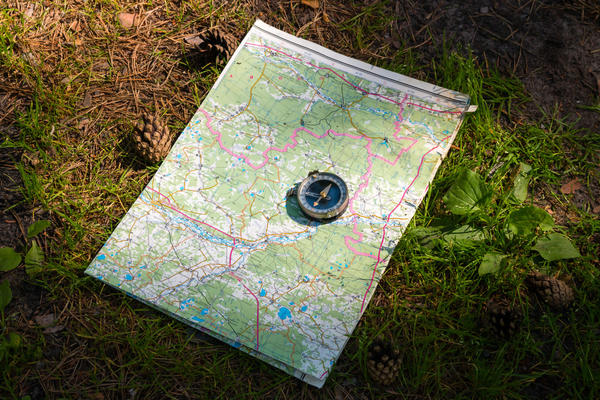 Explore the map and terrain features
Explore the map and terrain features
- Examine / repeat the map of the area;
- Make a route through mushroom places and try not to deviate from it;
- Consider potentially dangerous locations (ravines, swamps, etc.) to avoid them;
- On the way, memorize important landmarks, especially linear ones: a road, a clearing, a river, a power line - everything that sooner or later will lead to people (if it is a river or a stream, you need to go downstream);
- Create additional marks: at halts, fold Zen-pyramids of stones, mark tree trunks with marking tape - in general, try to inherit in every possible way (only without fanaticism).
Simple rules for mushroom picker
This September in Moscow cannot yet be called mushroom: the townspeople who go out to pick mushrooms in the region and nearby forests say that the catch is mainly honey mushrooms, sometimes oyster mushrooms. Ahead of the mushroom pickers is a rainy and harvest-rich October, although, according to Sergei Yermolov, it is extremely difficult to predict which species there will be many this year. “I treat mushrooms as mystical living beings. Which variety will be productive is always a surprise, and over the years I am only more convinced of this, ”says the specialist.
But whatever mushrooms are born this year, it is better to learn about the rules of their collection and storage in advance. For example, you need to remember that mycologists divide all mushrooms into three types: certainly edible (milk mushrooms, porcini mushrooms, saffron milk caps), conventionally edible (waves, violins, floats) and poisonous (pale toadstool, red fly agaric). Mushrooms of the first group can be cooked without preliminary boiling - they must be thoroughly cleaned of the ground, sorted out and washed, but conditionally edible ones must be boiled for 20-30 minutes before cooking, and any mushrooms collected in the forest can be pickled and salted only in galvanized or enameled dishes ...
It is better to collect the forest "harvest" in wicker baskets to preserve freshness, but set aside plastic bags, buckets or bags for garden vegetables. And, of course, any mushrooms - whether medicinal or used for food - should be looked for away from the city, industrial enterprises, roads and highways.
We are going to the forest
Trekking in the woods, especially for a beginner, requires preparation. You will need:
- Medium basket - put mushrooms. Never put them in a bag, otherwise your trophies will turn into an unappetizing crumb.
- Mushroom book with pictures - to identify the mushrooms found.
- Knife to cut mushrooms. Experienced mushroom pickers tie it on a string directly to the handle of the basket so as not to get lost.
- First aid kit - do not neglect it, even if you go to the nearest forest for only an hour or two. Anything can happen in the forest, and it is better to take the most necessary medicines with you.
- A phone with a navigator and an external battery to it, tucked into a waterproof case. And also a compass - in case there is no communication in the forest.
- A backpack, in which, in addition to the above, you can put a bottle of water, a snack, a thermos with tea, a raincoat and a mosquito spray.
- The right clothes: comfortable, completely covering your arms or legs and certainly bright so that you can be seen from a mile away. Give up the temptation to wear camouflage - if something happens, even specially trained rescuers may not notice you in such clothes in the forest.
- The right footwear: army boots with a high top are best, and rubber boots in the rain. Even in the heat, resist the temptation to wear light shoes with thin soles - it is easy to pierce them on a sharp knot and injure your foot.
The medicinal properties of mushrooms
The medicinal properties of mushrooms are known no less than recipes. From time immemorial, decoctions, tinctures and powders from mushrooms have been in the arsenal of healers. Chronicles say that Vladimir Monomakh was treated with a decoction of chaga for a tumor of the lower lip.
Personal healers of Empress Catherine II and Alexandra Fedorovna used mushrooms for treatment.The antitumor effect of mushrooms has become a sensation and is currently being actively studied.
Borovik lowers blood cholesterol, improves immunity, and prevents the development of gastrointestinal diseases. Chanterelles are a recognized anthelmintic agent. Pieces of raincoat applied to the wound help heal and stop bleeding. Morels improve vision.
So we found out where and when do they grow mushrooms, where it is better to look for them in the forest. And what medicinal properties they have.
Best regards, Constantine
We do not believe in myths
The saying "How many people - so many opinions" fits the description of the mushroom picking process as well as possible: on forums, in online encyclopedias and on numerous sites, there are a thousand and one opinions about how you can supposedly protect yourself from food poisoning after picking mushrooms on your own in the nearest forest. Some advise to clean the mushroom cap, others - to soak the mushrooms brought in a box for at least a day, and still others - add rubbing alcohol to the pan ... Such experiments can end in disaster for both the mushroom picker and his family, so it's better to forget about some myths, Sergey advises.
The most common myths and misconceptions about mushrooms are:
-
If there is a poisonous mushroom in the pot, the silver spoon, which is often placed with mushrooms during cooking, should darken. This is not true: Silver is darkened by amino acids found in both edible and poisonous mushrooms.
-
An onion, potato, or clove of garlic changes color in a pot of poisonous mushrooms. This is not true: these vegetables change color from the enzyme pepsin, which contains both poisonous and edible mushrooms.
-
Poisonous mushrooms curdle milk. This is also not the case: as in the previous case, milk clotting occurs under the action of the same enzyme.
-
Poisonous mushrooms taste bad. This is a very dangerous misconception: survivors of the Pale Toadstool poisoning, for example, talk about its great taste.
-
Boiling with vinegar, baking soda or salt deprives the poisonous mushrooms of their "toxicity". You don't even need to comment on this point - this is a 100% myth. They also say that all mushrooms are edible at a young age, but in fact, a poisonous mushroom is poisonous at any age and after any heat treatment.
-
The poisonous mushroom smells bad. This is not true: many deadly mushrooms smell pleasant or odorless.
-
There is an opinion that the first mushrooms that appear in June - July, even if it is white, boletus or boletus, are poisonous. False: these types of mushrooms are edible in June and September, and at any other time.
-
Many people believe that insects, larvae and slugs do not touch poisonous mushrooms. This is also a mistake: man is a mammal, his physiology is different, and larvae and insects can safely eat both poisonous and edible mushrooms for humans.
At the same time, remember that mushroom poisoning is most difficult for people with diseases of the digestive tract, the elderly, pregnant and lactating mothers (nutritionists generally advise them not to eat mushroom products), as well as children under 14 years old. But even for adults, any mushrooms are a difficult-to-digest product due to the abundance of fungal fiber - chitin, which makes it difficult for digestive juices to enter the body.
But for those who cannot imagine their diet without mushroom dishes, there is a huge scope for imagination when preparing them. According to Sergei Ermolov, the way to cook certain mushrooms is a separate tradition in each region. For example, lactariuses are salted, tubular mushrooms are dried, honey mushrooms are pickled, but the most delicious mushrooms are those that can be fried with onions and immediately served on the table. Good luck on your "quiet hunt"!
Prepared by Nadezhda Serezhkina. Photo materials provided by the interlocutor of the editorial board of "MIR 24" Sergei Ermolov from the profile in the social network Instagram (@griboved).
Get ready for force majeure
"I have bacon in my backpack, and matches, and Turgenev has eight volumes" 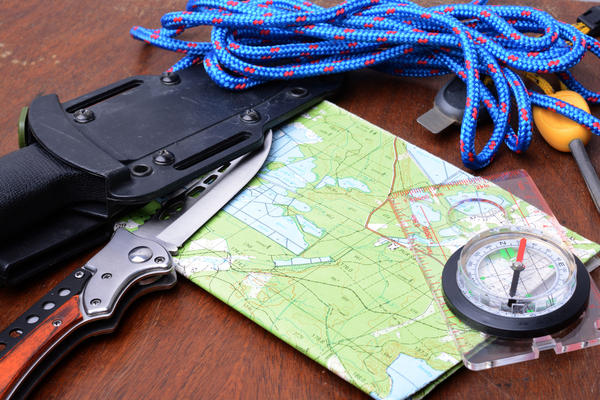 When going on a forest walk, try to take with you at least the minimum set of things you need to survive
When going on a forest walk, try to take with you at least the minimum set of things you need to survive
Mobile phone
Better the good old push-button: it keeps the battery charge longer. It would be nice to equip more advanced models with an external battery - also pre-charged.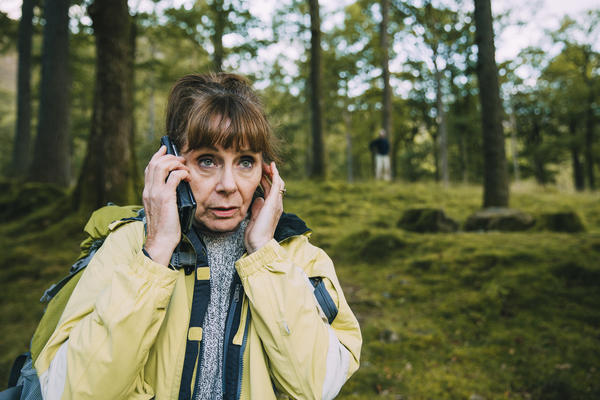 Don't forget your mobile phoneWhere to call if you get lost?
Don't forget your mobile phoneWhere to call if you get lost?
- to the rescue service: 112 (or by direct number 101).
- to the search party "Liza Alert": 8 (800) 700-54-52.
Compass, matches, first aid kit
The old joke “if you get lost in the forest, and you forgot the compass, wait until autumn: where the birds fly - there is the south” we will leave to ornithologists. Ability to determine the side of the world by mosses on trees - to bryologists. Everyone else is better off using the compass. It can be installed on a smartphone, but the usual one is more reliable. Just remember to look at it when you enter the forest.
We immediately put matches and lighters in a waterproof bag, like a first aid kit.
In addition, rescuers often recommend taking a whistle with you to attract attention.

